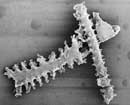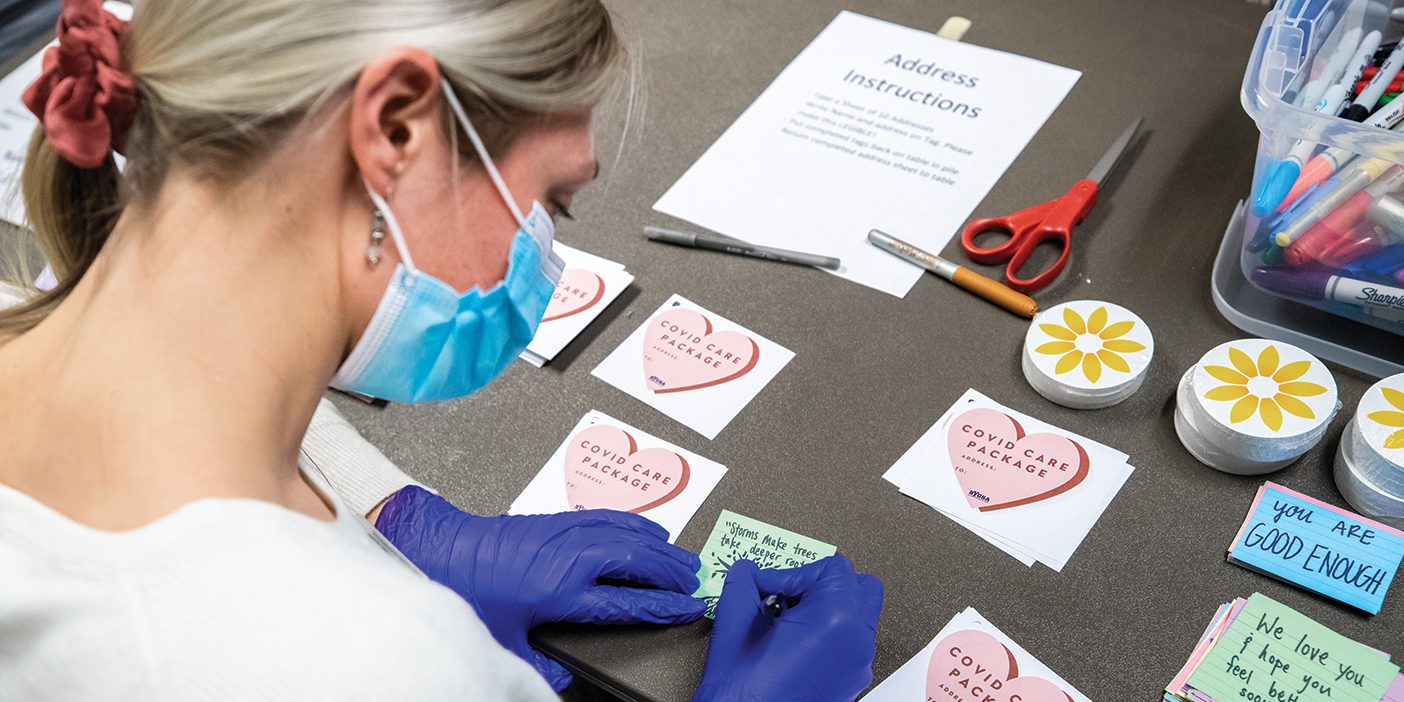By Mary Lynn Johnson and Erick Carlson
They are made of silica, the same element found in sand and computer chips. Like grains of sand, they won’t decay and can’t be digested. Like computer chips, they store information. Only visible under a microscope, they can have fantastic shapes, resembling vertebrae, caterpillars, or fragments of coral. And there can be thousands of them in a handful of average soil.

These microscopic fossils, called phytoliths, formed inside wheat plants. BYU’s Terry B. Ball is an expert on phytolith classification.
Produced by some species of plants, these microscopic gyrations of silica are called phytoliths. And Terry B. Ball, botanist and associate professor of ancient scripture, is one of the world’s experts on their classification.
Phytoliths (literally “plant-rocks”) form when a plant takes up monosilicic acid through its roots. The acid collects inside or between the plant’s cells, where it polymerizes to become a cast of plant tissue. Each species produces its own distinctive phytolith shapes. And when a plant dies, its phytoliths are released into the soil, providing a traceable record of plant life.
The president of the international Society for Phytolith Research, Ball says his field has important archaeological applications. Phytoliths have been found on stone tools that were used to process vegetation, in ceramic vessels used for storing harvests, and even in the tooth tartar of plant-eating animals. Properly identified, the microfossils could provide clues about ancient plant life and climates, trade between ancient peoples, and the eating patterns of past cultures.
Though they were discovered in the 19th century, academic study of these microfossils is just now gaining momentum. Until recently, Ball explains, researchers relied on light microscopy and simple measurements to identify phytoliths. Consequently, they struggled to distinguish between phytoliths produced by closely related species such as wheat and barley.
Ball has developed a more reliable method for identifying phytoliths. With Wilford M. Hess and John S. Gardner of BYU’s Botany and Range Science Department, he has pioneered the use of electron microscopy, computer-aided imaging, and statistical analysis in phytolith research.
“We’re getting about 95 percent correct classification with all of the tests we’re doing,” Ball says. “We’ve found our greatest success with identifying Old World grasses like wheat and barley.”
The majority of current phytolith research focuses on grasses because “archaeologically, grasses are especially significant,” Ball explains. “Grasses feed the world.” He and his colleagues are working to catalog the phytoliths from major grains like wheat, barley, rice, and oats. Once complete, their database will help other researchers identify unknown phytoliths. They have also developed a method for analyzing the phytoliths in ancient food residues.
To assess the usefulness of phytoliths in archaeology, the Chicago Field Museum recently sent Ball’s team a test—samples of food residue from two ancient pots—and asked them to determine which pot was from Peru and which came from Iraq. By studying phytoliths from the residue, they found that one pot had held corn, which tied it to America. The other had held einkorn wheat—the most ancient domesticated wheat—which linked it with Iraq.
A former LDS seminary teacher, Ball conducted his doctoral research in archaeobotany with an emphasis in the Holy Land, and he still has research ties to the Near East. In 1999 he collected phyto-liths from the area of Oman believed to be Nephi’s Book of Mormon Bountiful, and he is now analyzing food residues from ceramics unearthed at Tel Kadesh in northwestern Israel and near Antioch in present-day Turkey.









